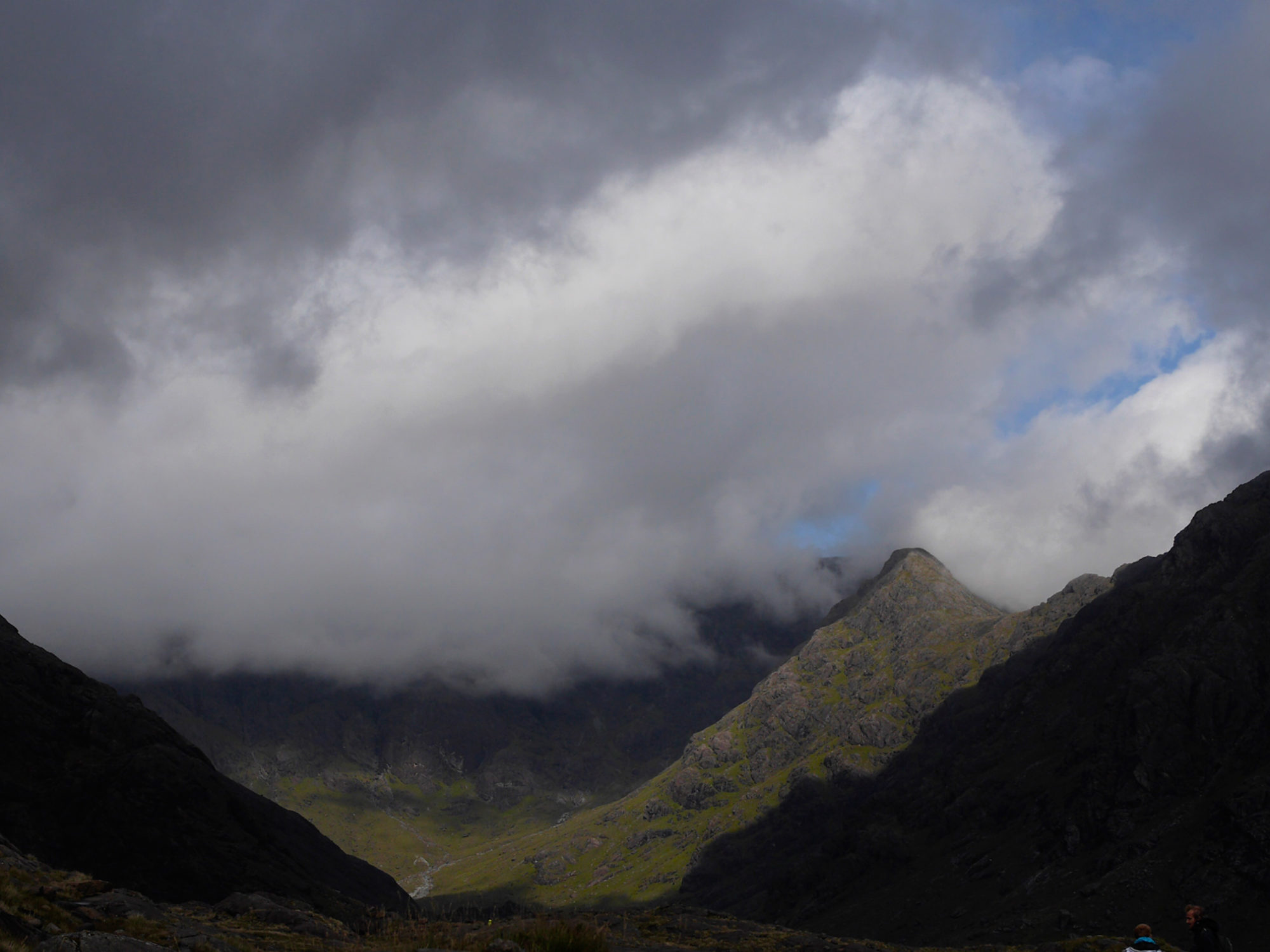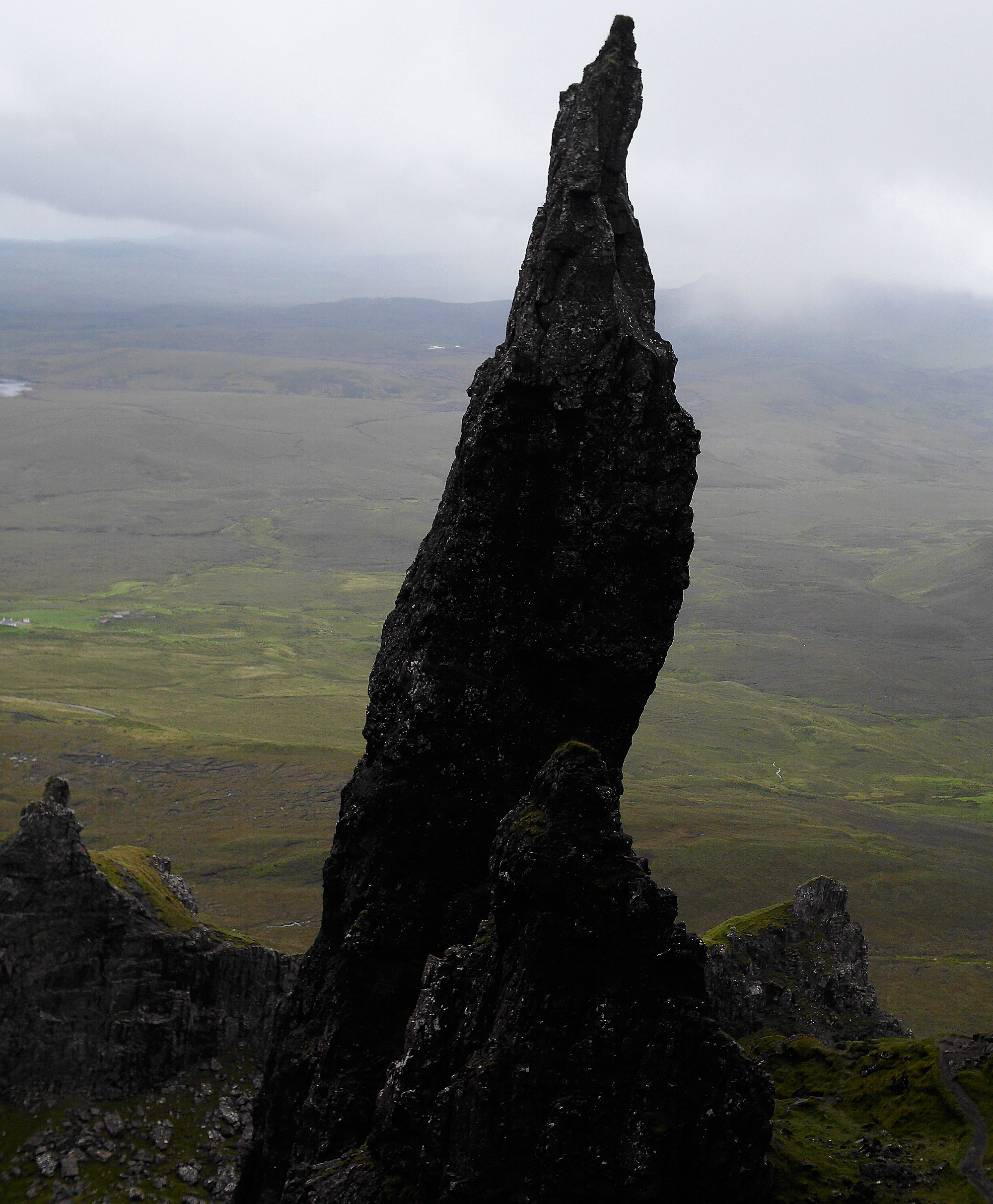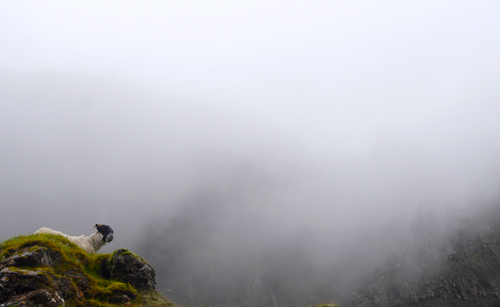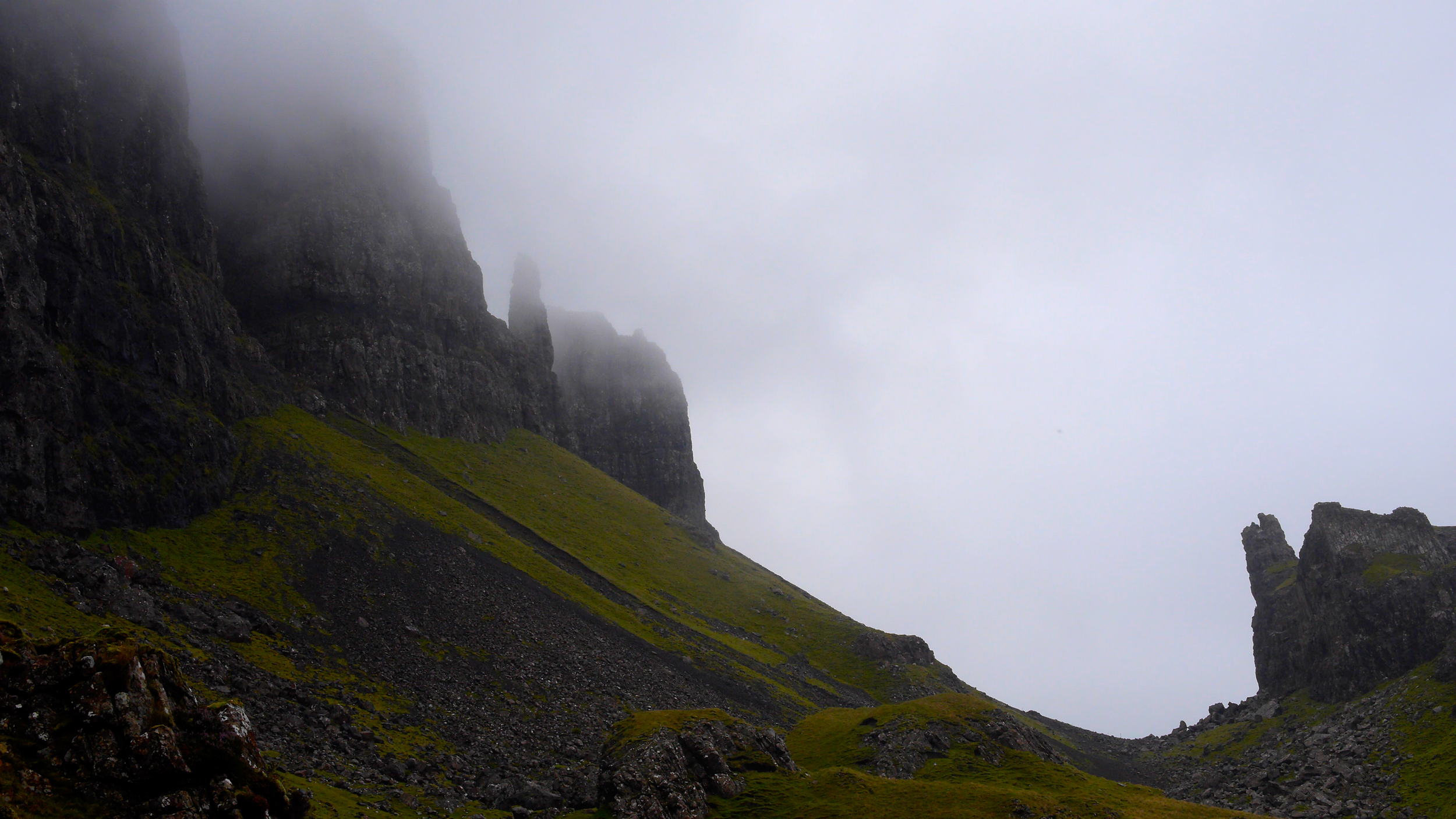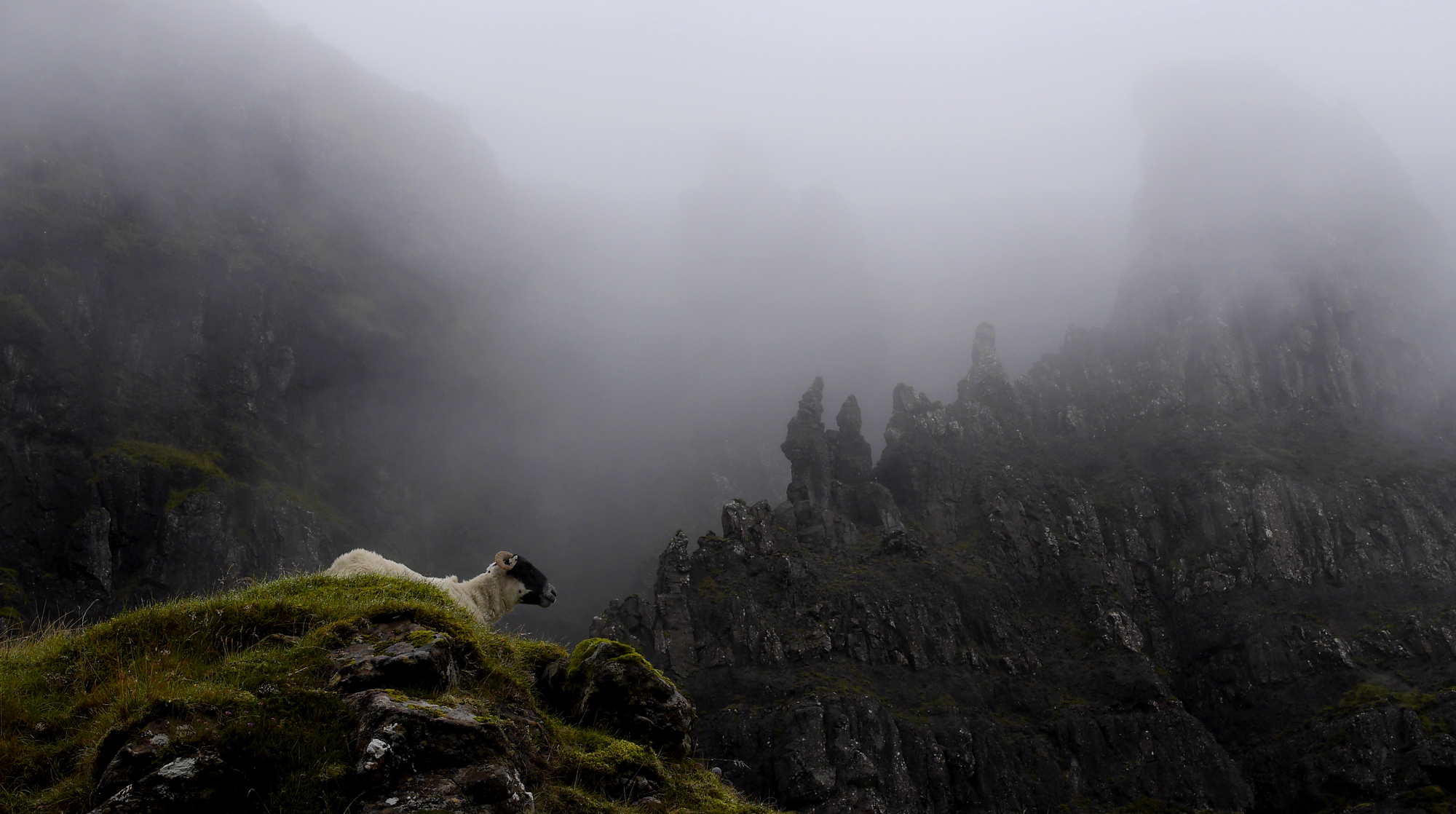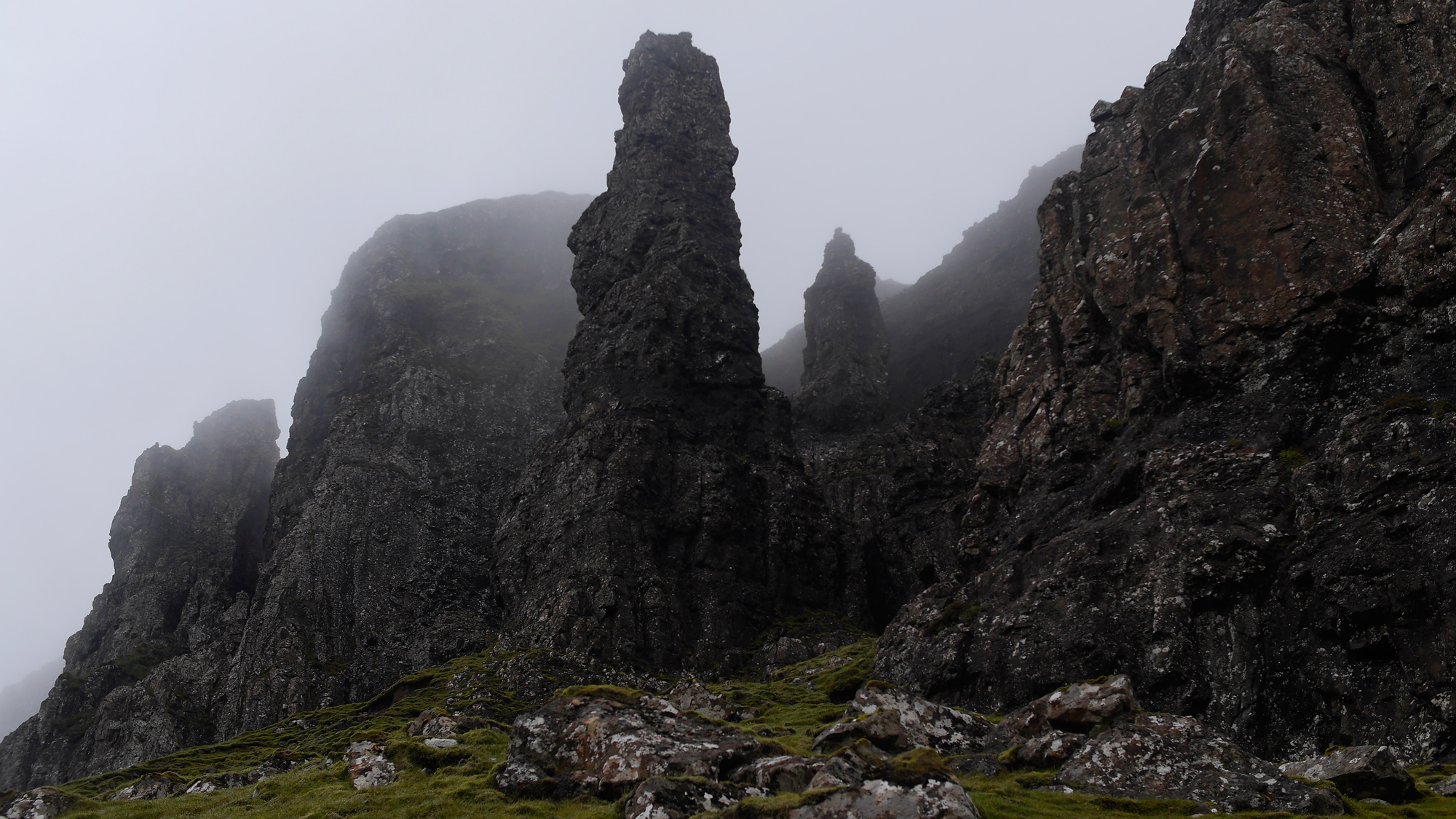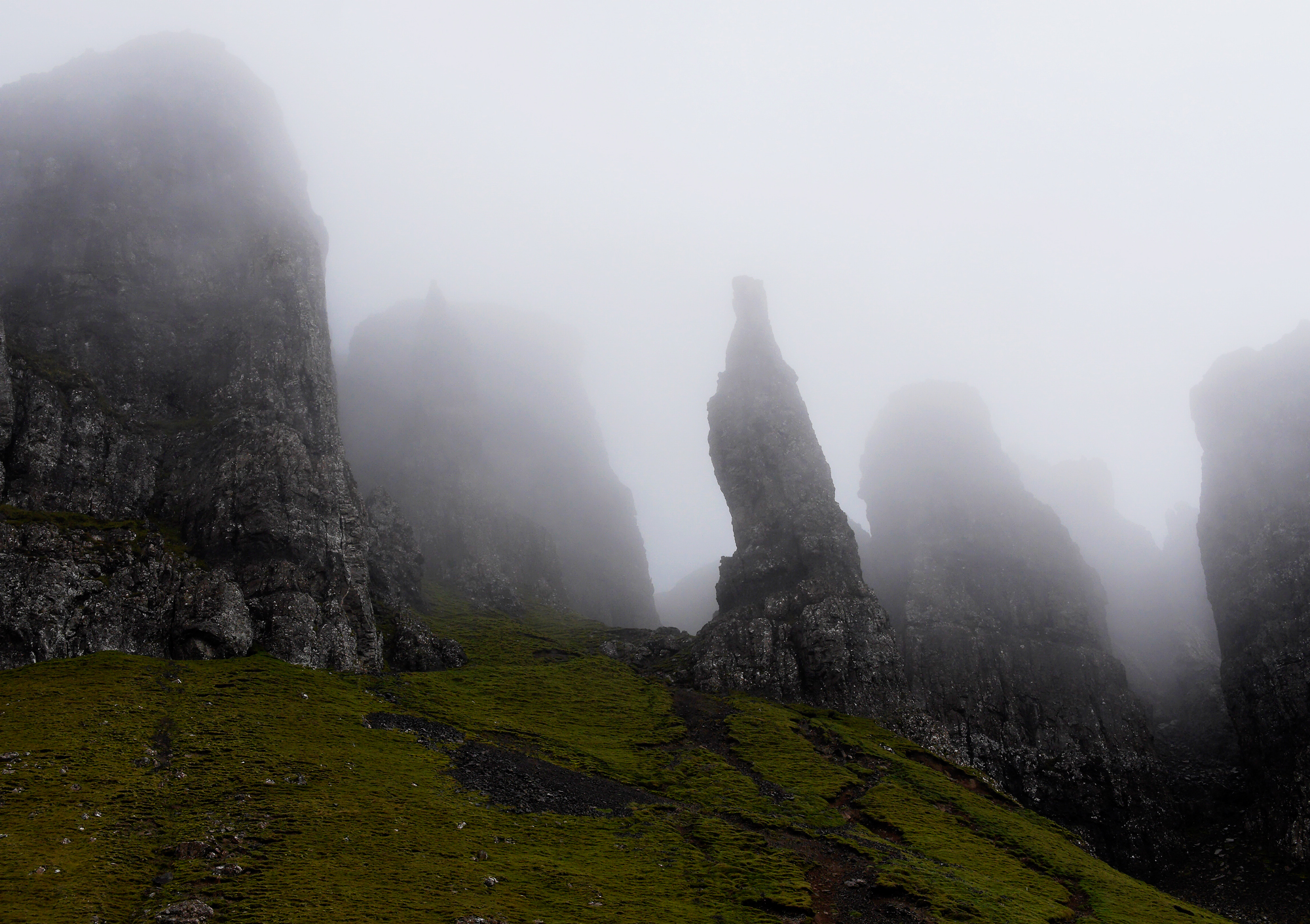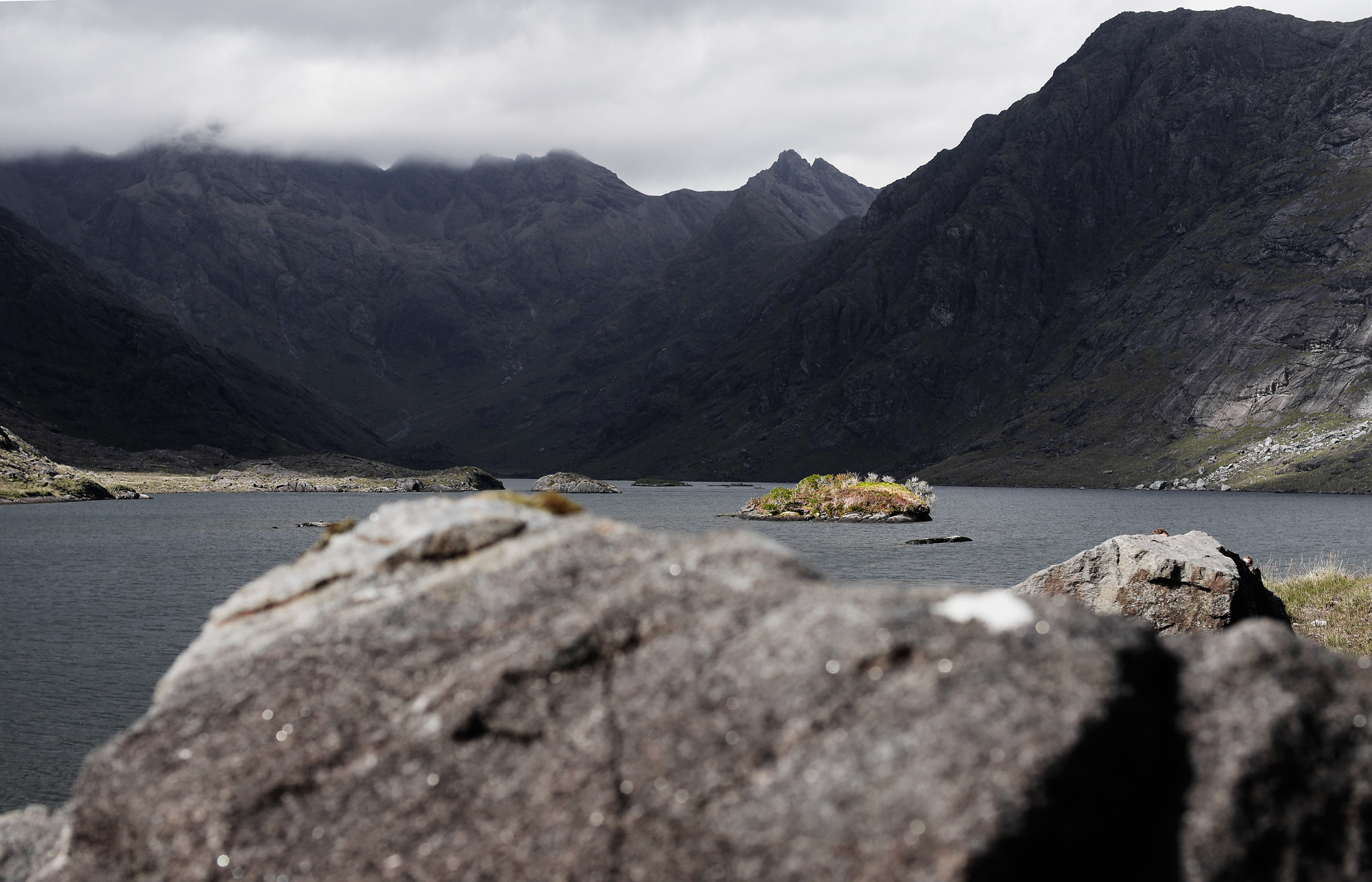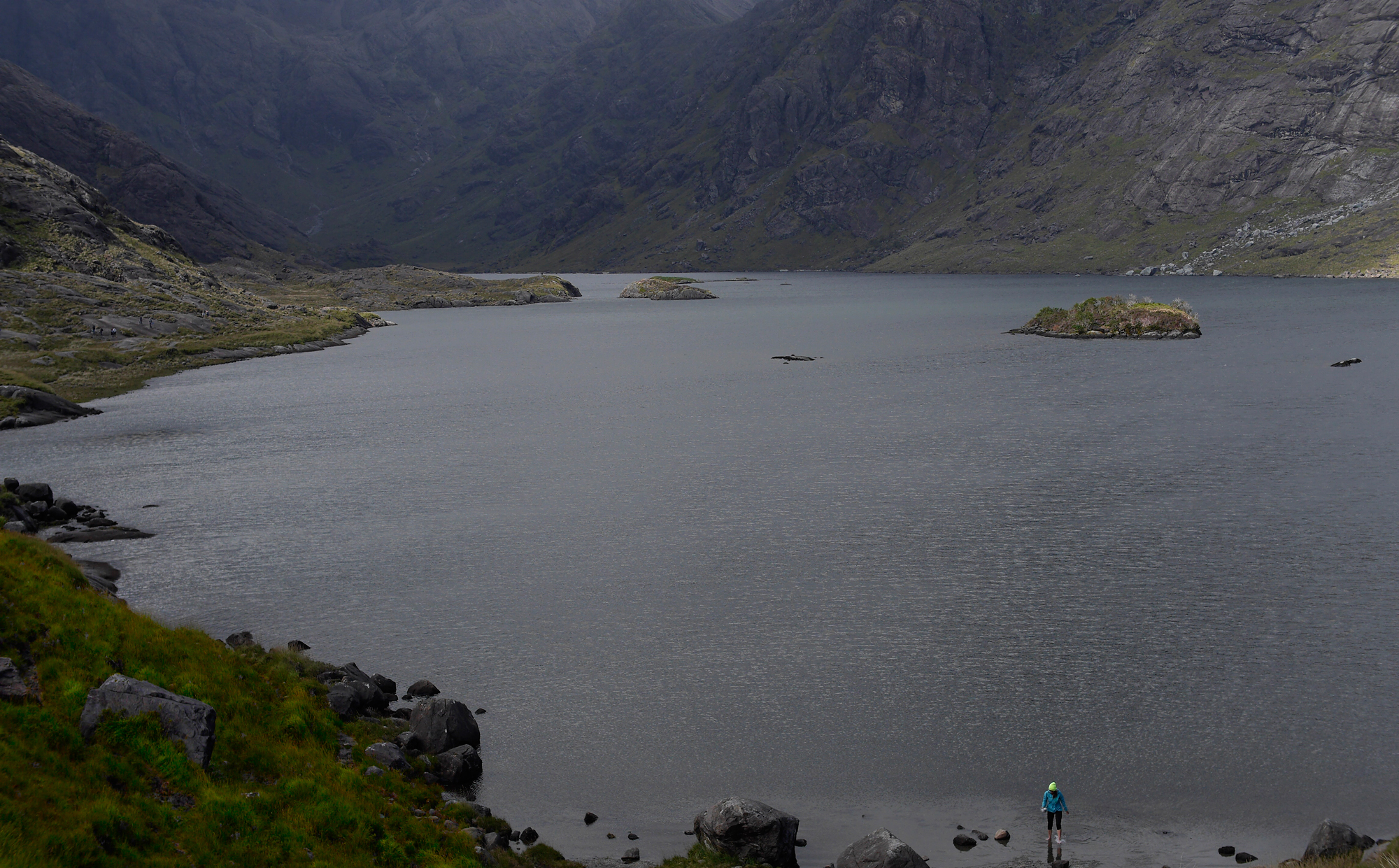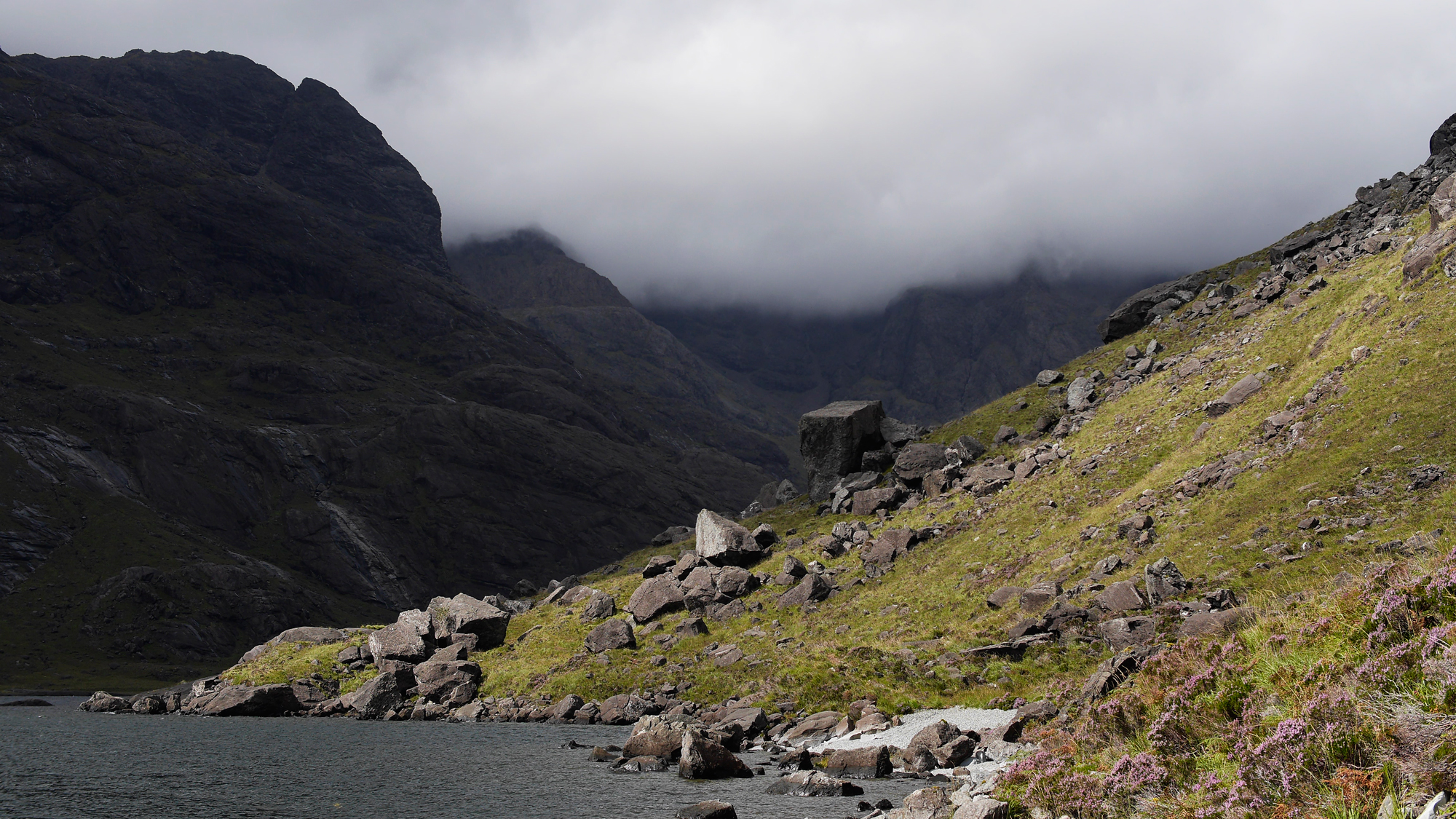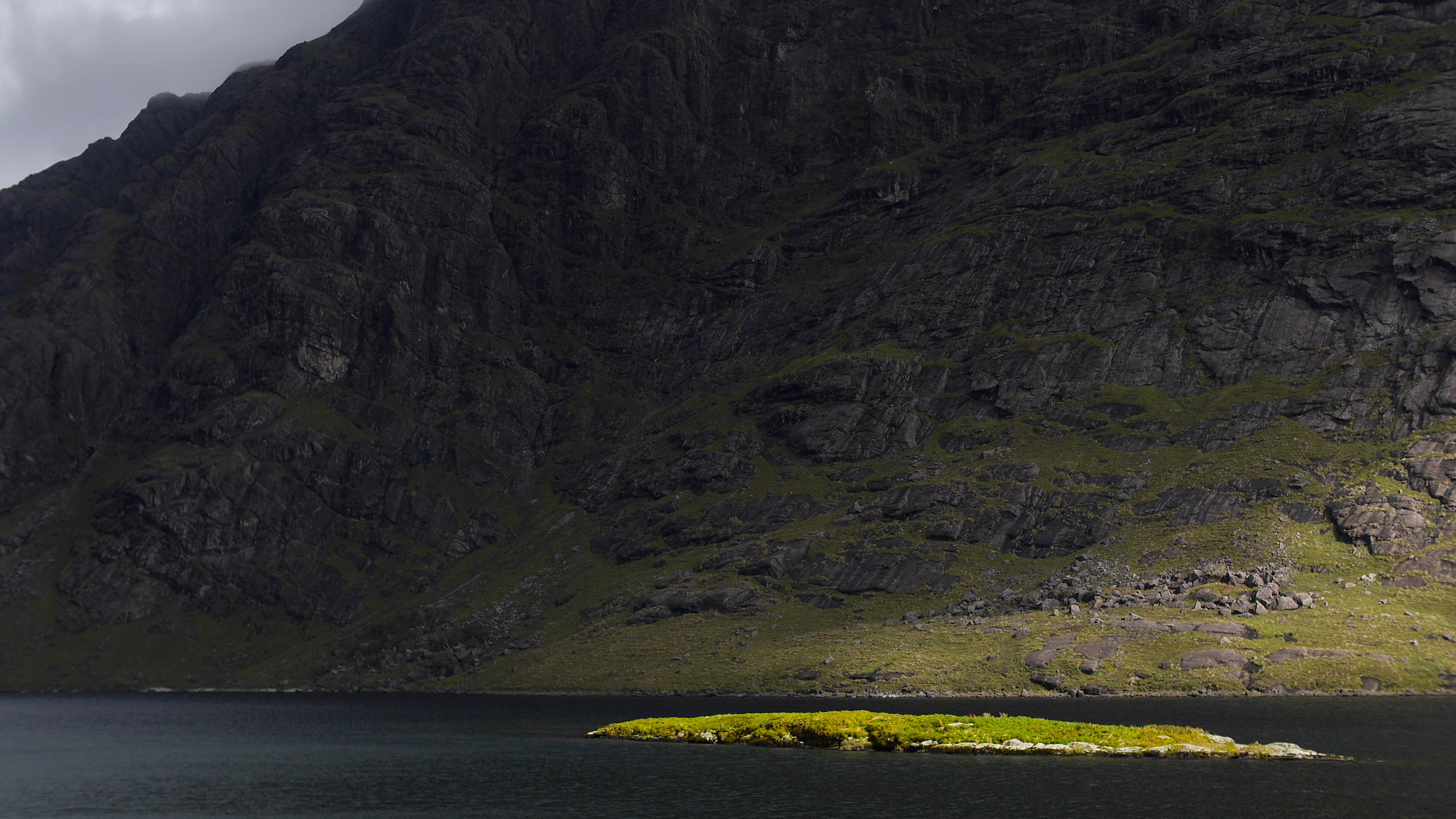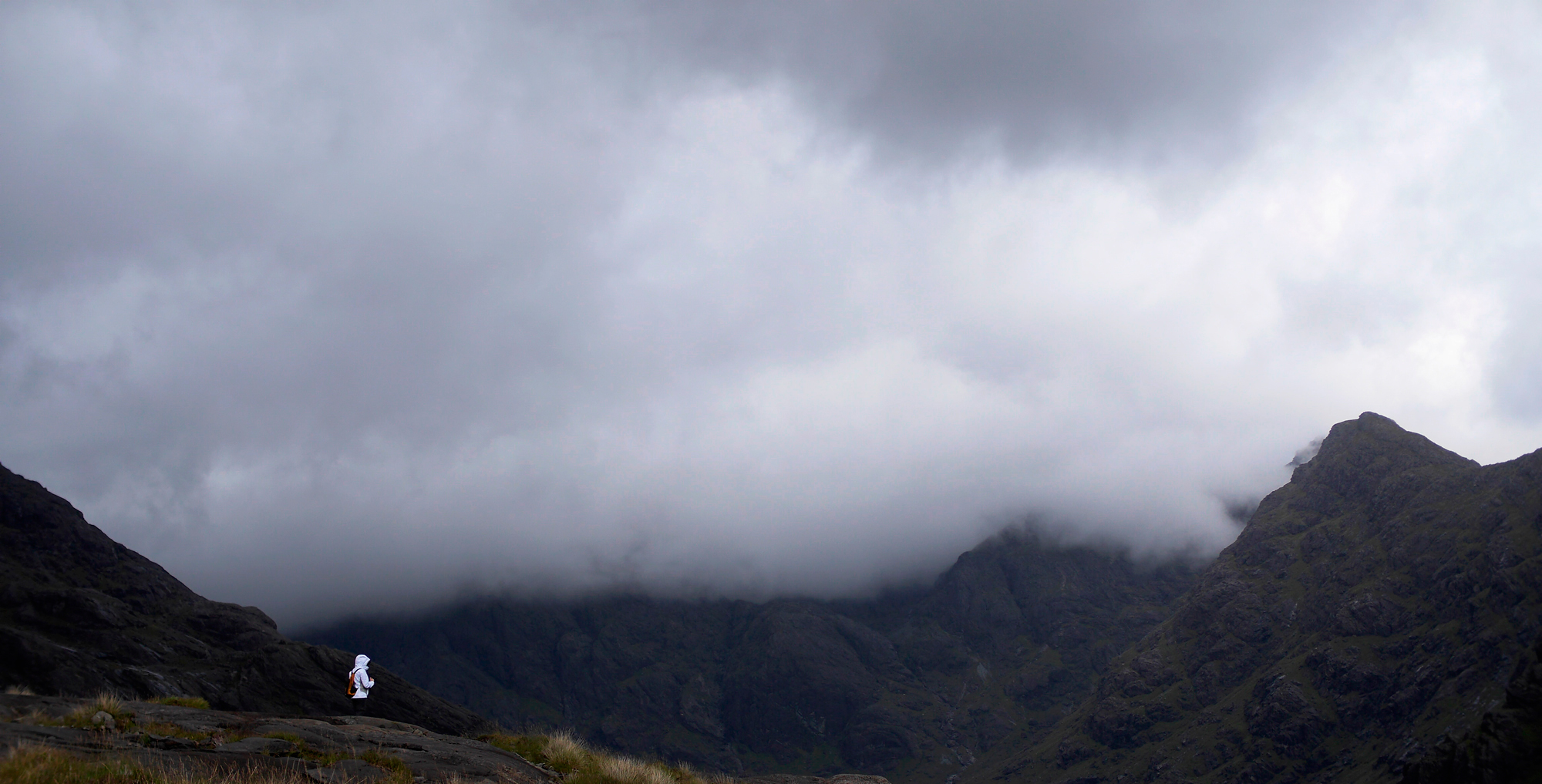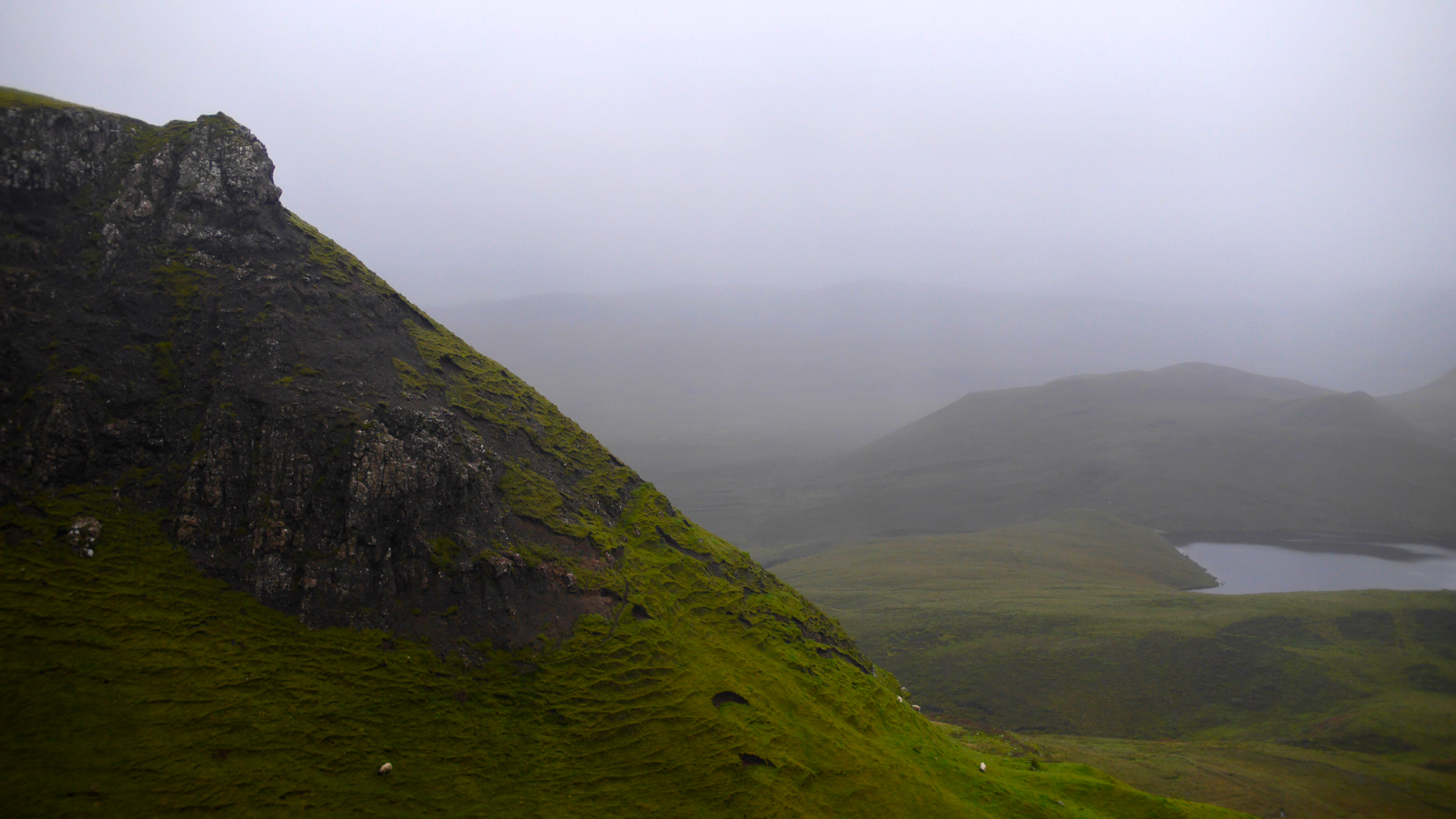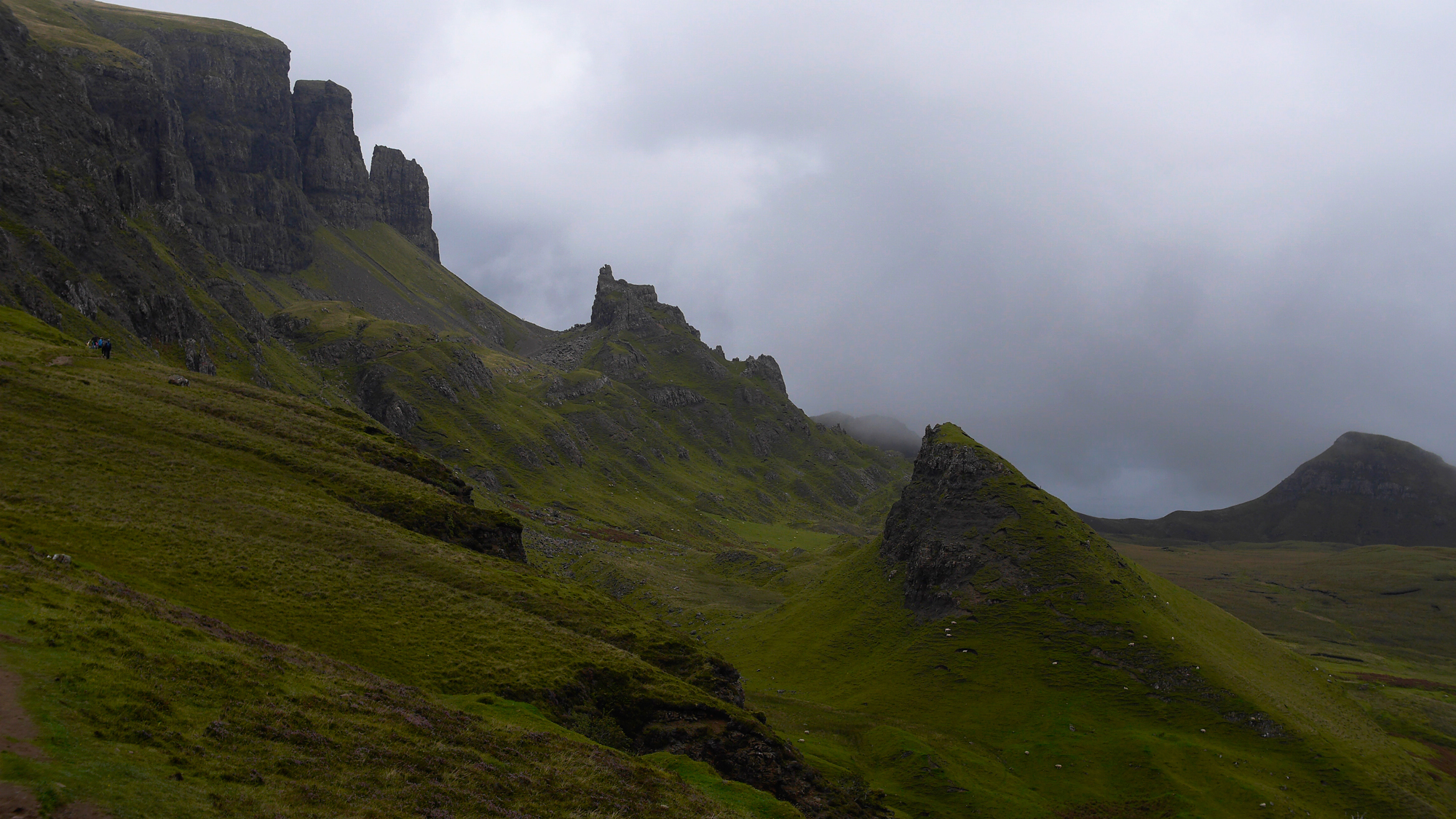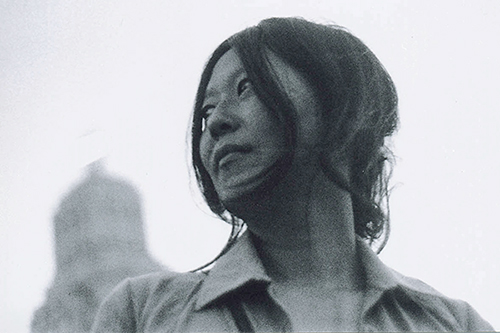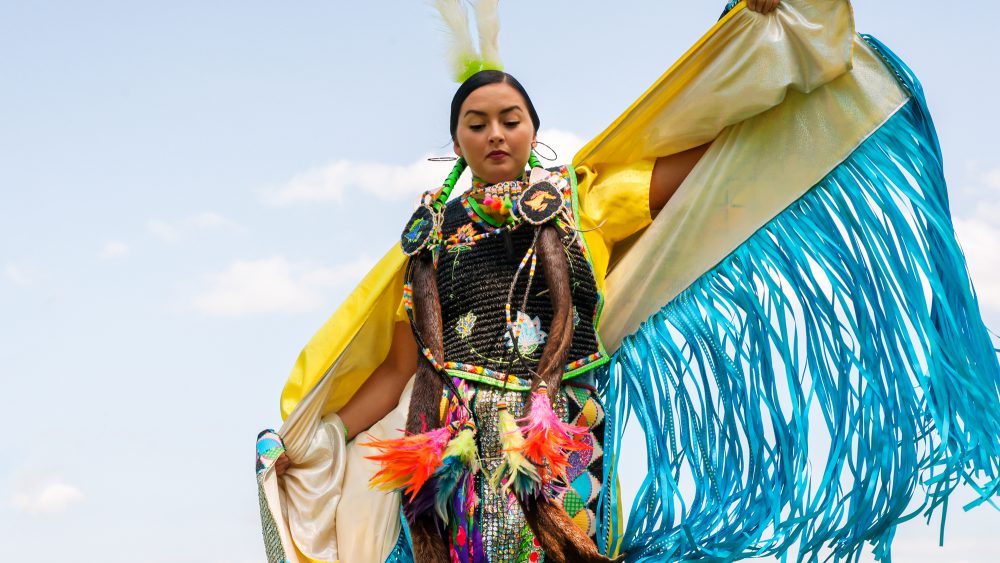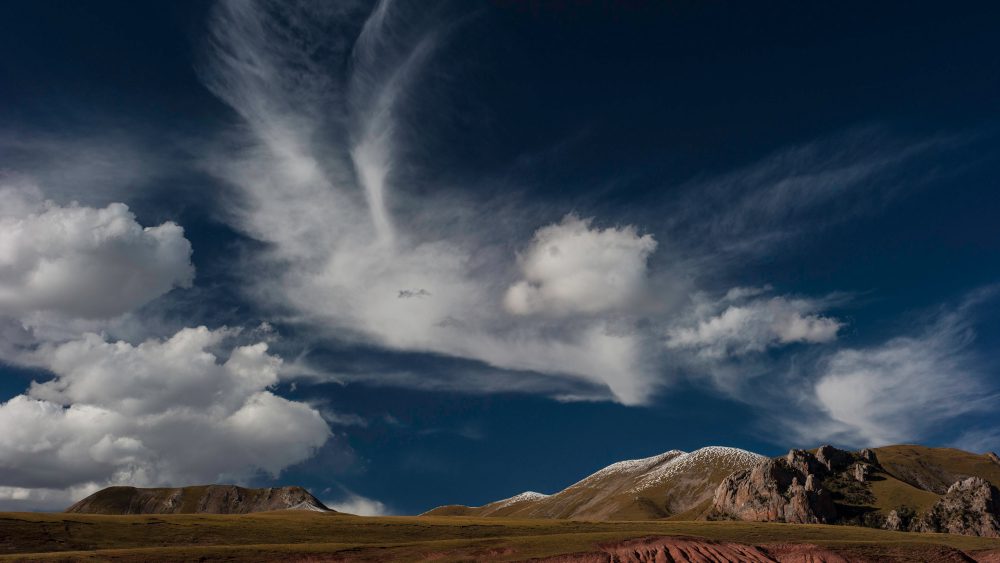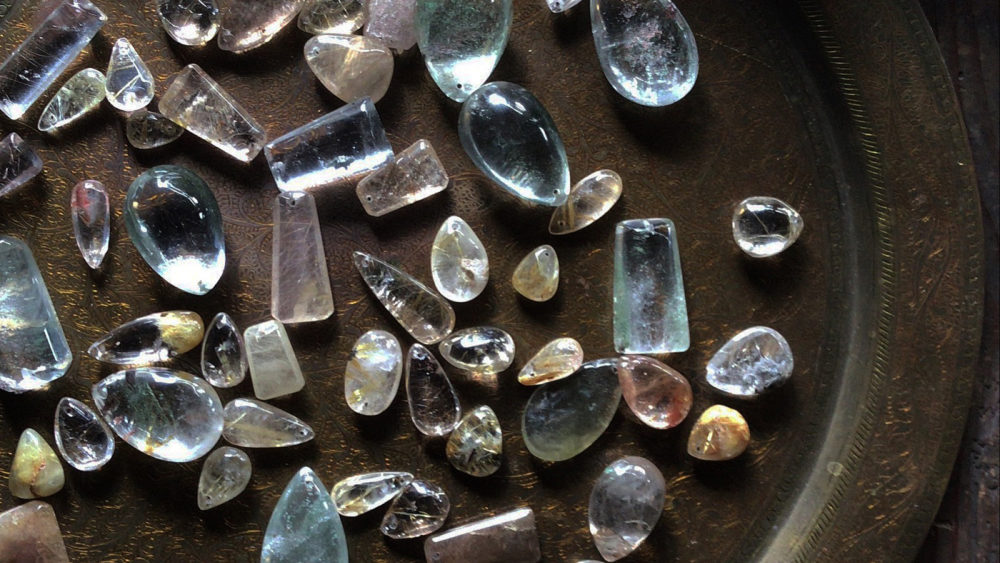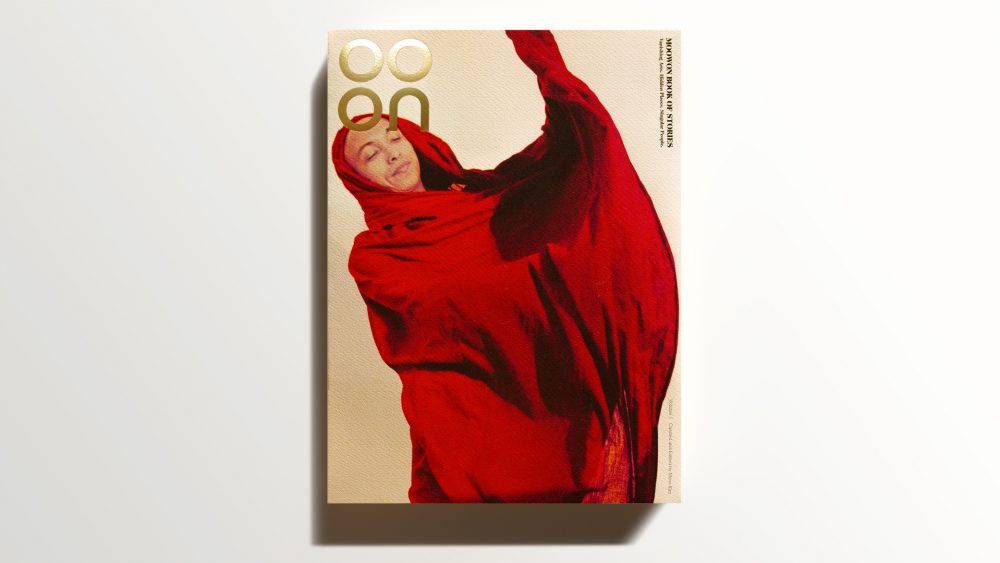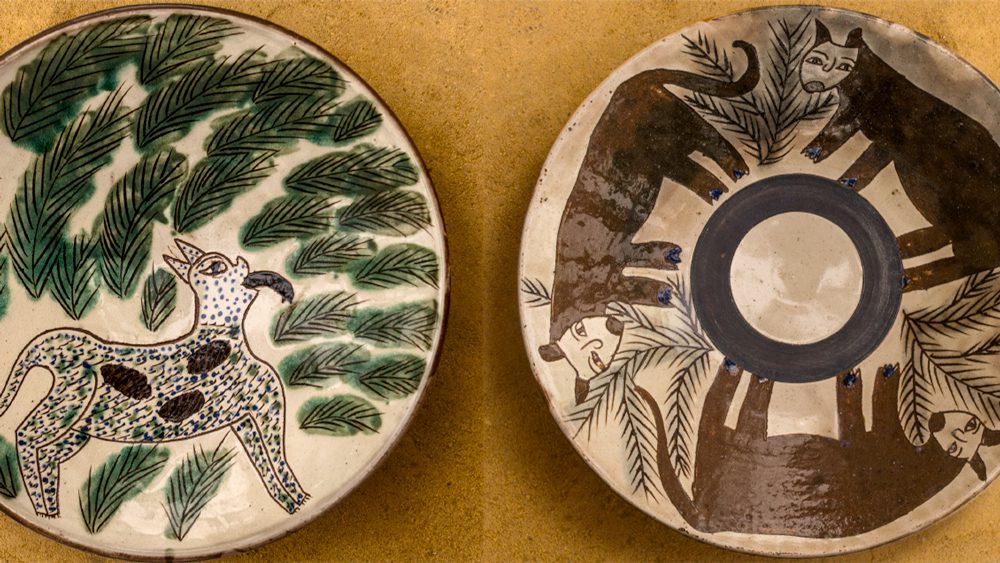Initially, I set out to encounter artisans on the Isle of Skye, the northernmost island in the Inner Hebrides of Scotland.
We have all, at times, had bouts of counter intuition about our initial ideas. And this was no exception.
The moment I set my foot on this atmospheric island, its forces broke my will to carry out my original intellect-driven plan.
At the turn of the road, the Isle rose up before me in its spectacular tyranny as a way to remind us that
nature is more powerful than any human endeavor. As the memory of artisans diminished into a mere afterthought
against its monolithic body, it thundered "This is my story."
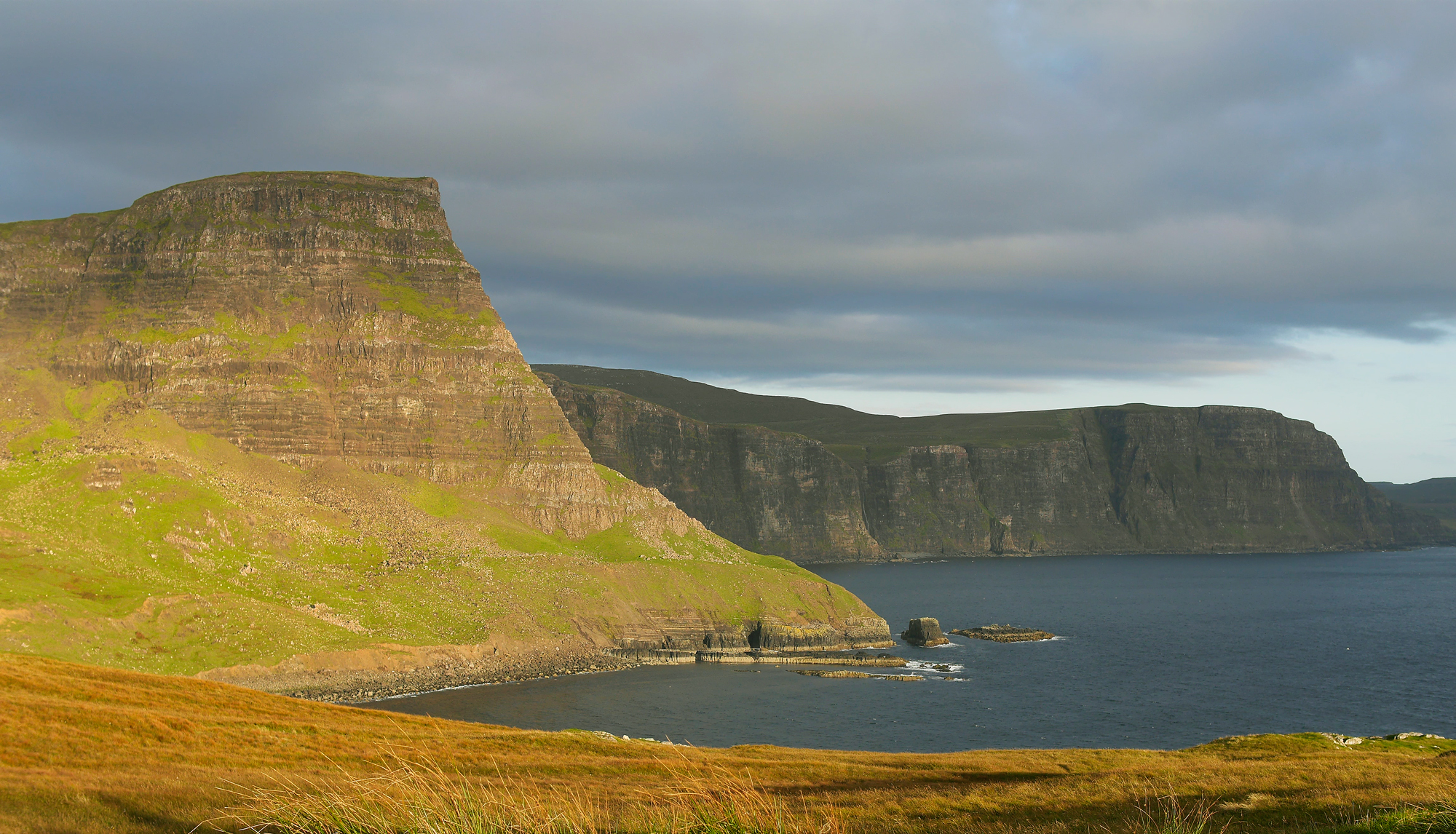
An alchemy of Light, Wind, and Water against a dramatic terrain, the Isle of Skye is most glorious when mist rolls in and its skies turn black and stormy in anger. Full sunlight flattens its mystery. It is not a coincidence that the Norse referred to it as an "isle of mist" or an "isle of cloud". Its landscapes are so overpowering that signs of human habitation in the forms of black and white croft houses resemble flies on a dinosaur. Even on a map, its geographical shape is powerful with multiple peninsulas radiating out from its center (hence skitis the early Celtic word for winged).
To enjoy the full story, become a Member.
Already a Member? Log in.
For $50/year,
+ Enjoy full-length members-only stories
+ Unlock all rare stories from the “Moowon Collection”
+ Support our cause in bringing meaningful purpose-driven stories
+ Contribute to those in need (part of your membership fee goes to charities)
EDITING: COPYRIGHT © MOOWON MAGAZINE /MONA KIM PROJECTS LLC. ALL RIGHTS RESERVED.
PHOTOS & TEXT: COPYRIGHT © MONA KIM / MOOWON MAGAZINE. ALL RIGHTS RESERVED.
TO ACQUIRE USAGE RIGHTS, PLEASE CONTACT US at HELLO@MOOWON.COM
